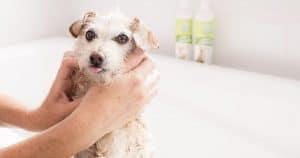
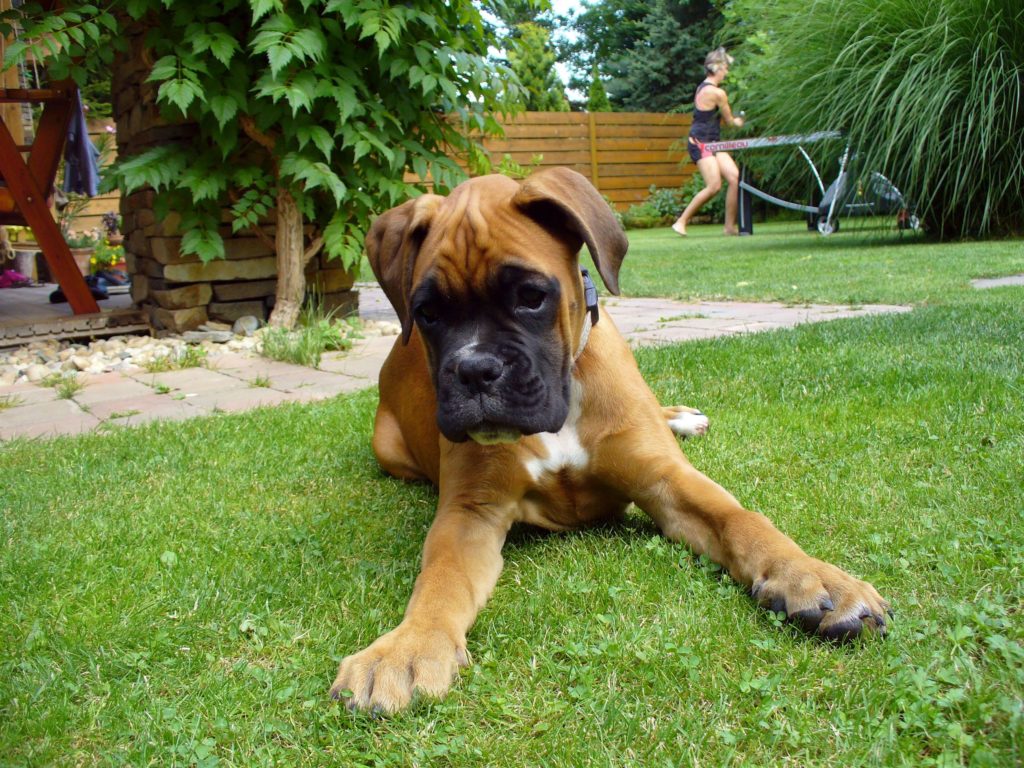
Grooming a puppy and anxious dogs can be tough on everyone involved. The dog, owner AND groomer!
Whilst a dog can be genetically predisposed to anxiety, it can also be triggered by events and other experiences the dog is exposed to in life, particularly during their critical period of development.
Grooming can be one of those highly stressful triggers that can cause anxiety in dogs, so it is important that your groomer is aware of any issues your dog may have already so that they can help to keep them as comfortable as possible and exacerbate it.
It is also really important as an owner to do what you can to help prevent them from developing anxiety around grooming whilst they are a puppy, or do some training work at home (or with the help of an experienced trainer to help desensitize your dog to the grooming process) to make both your groomer’s and dog’s life a little easier when it comes to grooming.
From the moment your puppy arrives home training should start, as grooming puppies early and properly can make a huge difference moving forward.
Rather than taking your puppy in for a full groom, take them in for a meet and greet and a basic grooming session, to help create a positive association with the groomers. This might just be for a brush and very slight trim, or nail clip, rather than a full groom.
The following actions will allow your puppy to feel comfortable and help it to understand that grooming can be a relaxing and enjoyable experience. This is as equally important to continue with older dogs too who may experience some anxiety around grooming.
Playing with the paws and gently massaging them between the pads can be a great exercise to do when on the couch with your dog or on the floor. It can be a great bonding session for you and your dog and end up being quite a relaxing experience. It also helps with the nail cutting process and can help with grooming a puppy at the grooming salon.
Grooming around the face is cautious work as you are using sharp tools around the eyes and ears. To avoid the risk of injury, teaching your dog to stay still whilst working around the face is very important and can be quite the challenge when grooming puppies.
To get a dog used to scissors being used in this area, get them used to the sounds of the scissors by snipping’ at a distances to their ears that they can hear, but don’t feel threatened by, and use a metal teaspon to rub around their eye area to get them used to the metal feeling of scissors.
Ask your puppy to sit and reward the desired behaviour with treats or praise as you get them used to being touched around the face. A good way to start is to gently rub under the chin and reward their quiet/still response.
Once your puppy is comfortable with this action, start to gently hold the fur under the chin still rewarding calm, positive behaviour. Continue this action until your puppy is comfortable and doesn’t pull away, and then move to other areas around the eyes, gently touching them and rewarding calm behaviour.
If you are comfortable that your dog is going to stay still then you could start to introduce a very small slight clip of hair on the chin or around the eyes.
If you are not confident though, then do leave this to the professional groomer as the last thing you want is for your when grooming a puppy is for them to get a snip of the scissors and create a negative association with grooming.
When it comes to grooming a puppy, you want to make sure they see being in the water as a fun and positive experience. Don’t go too hard too fast, don’t tease them with a water hose, or punish them with a water spray bottle – ever!
If you haven’t got a bath, then a plastic tub that will fit your puppy will do the trick. Make the water lukewarm and only 10-15cm deep.
Gently place your puppy’s feet into the water and praise or give them a treat if they are not struggling. If they struggle, gently hold them till they stop and at the moment when they still, is when you praise or reward them with a treat. Remember we do not want to reinforce unwanted behaviour.
You could always use a small bit of safe unsweetened/unsalted peanut butter (note: it must not contain the sweetener xylitol as this is toxic for dogs) on a spoon or lickmat so that way they can focus on licking the peanut butter whilst you start working on them.
Gently cup water over your puppy’s back, avoid getting water in their ears and eyes, you can use a face washer to clean their face to help. Place a small amount of puppy shampoo on their back and rub soothingly into the coat, rinse again and always remember to praise your puppy when they are accepting you doing this.
Once you have rinsed your puppy off use a towel to dry them. It is best to towel dry on the first few baths so your puppy can become more accustomed to the experience.
When drying your puppy, this is the biggest problem groomers see in the salon. If you tease your puppy with a hair dryer at home or in the D.I.Y baths, you can cause serious anxiety in your dog which can lead to them defecting or urinating on the table.
When bathing your puppy at home it is safer to just towel dry them and leave them to air dry. If you have a long coated dog, spraying them with a detangler and using a comb to lightly brush out any knots so that they don’t dry and get matted.
In the colder months if you do want to dry them with a hairdryer, use the lowest setting and hold it about 40cm away and just allow the puppy to feel the breeze of air and also give them some peanut butter to focus the attention away. Once they are more comfortable you can gradually get closer to the puppy as long as they don’t become frightened.
Do not tease or play games with the dryer, as the end results will not be favourable.
A brush can be a pretty scary tool to your puppy. With time and persistence, they will get used to it.
The biggest tip is to not pull on knots or matted hair and to brush them regularly. If you do come across a knot, hold at the base close to the skin and slowly work away at the knot with a comb. If it is badly matted, it does need to be addressed so it doesn’t pull on their skin.
Most groomers are happy for you to come in for a quick fix before your next appointment so it is worth contacting them if you aren’t able to brush it out or confident about cutting it out with some scissors.
When it comes to grooming puppies, it is best to get them used to the process as early as possible, as well as being used to the grooming salon. Pop past to say hello or for a treat, without a grooming appointment to help create a positive association with the place.
Don’t leave it too late and do your research to find a recommended groomer that will help ensure your puppy’s first grooming experience is a positive one and so they can associate it with being a fun and pleasant activity.
Always make sure you use pet specific grooming tools, from brushes to scissors, shampoos and nail clippers. It is not appropriate to use human shampoos or tools on your dog for their health, safety and wellbeing.
Check out the Doggone Gorgeous website to help you with your grooming needs, and to download their free grooming e-book.

Choosing a dog shampoo & other dog wash tips
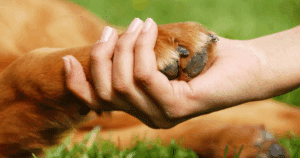
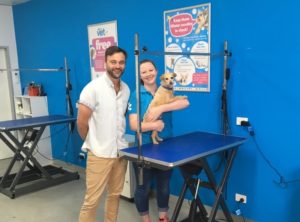
The importance of regular dog grooming
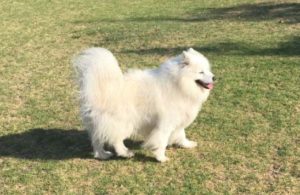
Grooming a dog with a double coat
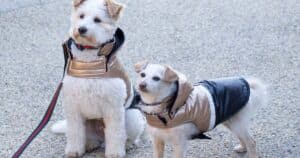
Winter safety for dogs – Top Tips


Get your paws on Lara Shannon’s best selling books ‘Eat, Play, Love (your dog) and World of Dogs.
Available in Australia, USA, UK and Canada.